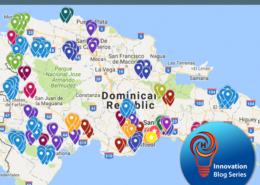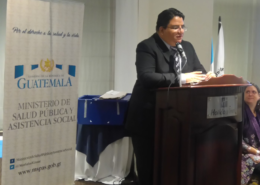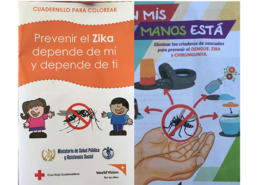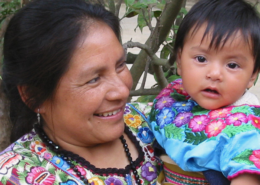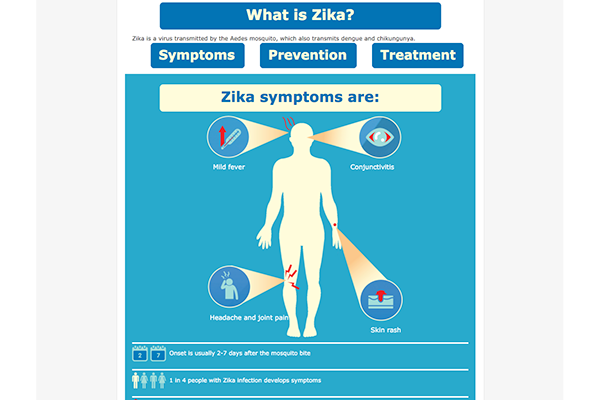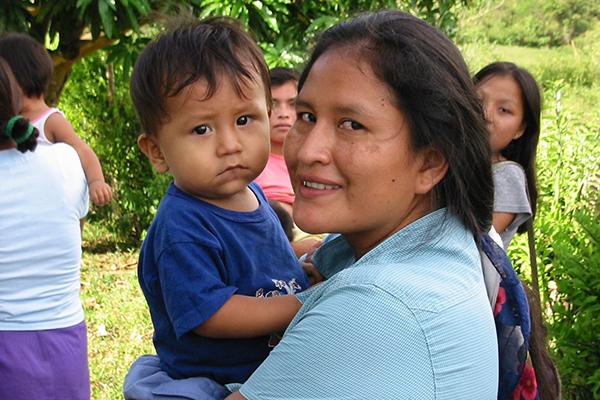 Zika is a communicable disease transmitted by the Aedes mosquito, which is native to Latin and Central American countries and also transmits dengue and chikungunya. Though only about 20 percent of infected people experience symptoms in the form of a fever, rash, joint pain and conjunctivitis, the current Zika outbreak is related to an increase in cases of Guillain-Barre syndrome and microcephaly, two severe neurological conditions. Without an available vaccine, preventative measures focus on awareness, vector control, and risk reduction for at-risk populations.
Zika is a communicable disease transmitted by the Aedes mosquito, which is native to Latin and Central American countries and also transmits dengue and chikungunya. Though only about 20 percent of infected people experience symptoms in the form of a fever, rash, joint pain and conjunctivitis, the current Zika outbreak is related to an increase in cases of Guillain-Barre syndrome and microcephaly, two severe neurological conditions. Without an available vaccine, preventative measures focus on awareness, vector control, and risk reduction for at-risk populations.
In April and May 2016, HC3 mobilized a team of SBCC, vector control, Latin America and family planning experts to conduct a social and behavior change communication (SBCC) landscape exercise for Zika in four Central American countries: Honduras, El Salvador, Dominican Republic and Guatemala. The resulting report provides a snapshot of the current Zika situation and local response, an important step to creating effective SBCC activities.
HC3 also launched the Zika Communication Network (ZCN) to meet the pressing demand for Zika response tools. ZCN supports communities currently affected – and those that will soon be affected – by connecting responders with state-of-the-art knowledge and tools they can readily use or adapt to their response plan.
HC3’s work in the Zika response included technical assistance to affected countries and development of the Strategic Communication for Zika Prevention: A Framework for Local Adaptation and the Quick Guide to Adapting the Strategic Communication Framework for Zika Prevention.

